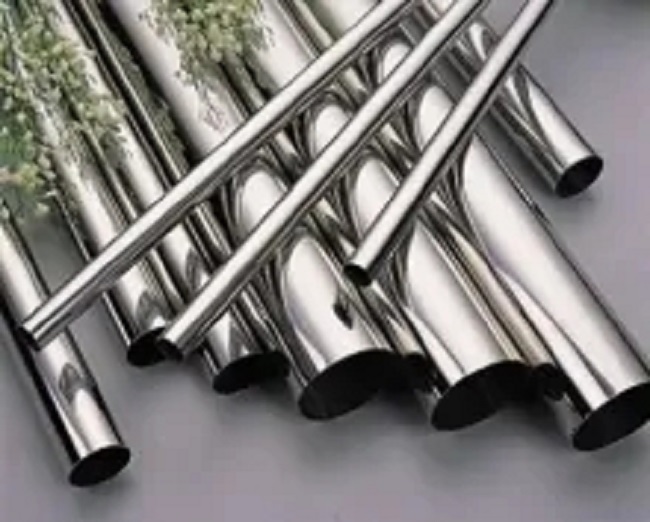
Privacy statement: Your privacy is very important to Us. Our company promises not to disclose your personal information to any external company with out your explicit permission.
Mr. Mark
What can I do for you?

![]() June 20, 2022
June 20, 2022
Austenitic stainless steel has good weldability, but for different types of austenitic stainless steel, when the austenite is cooled from high temperature to room temperature during the welding process, due to the difference in alloying elements such as C, Cr, Ni, Mo, the metallographic phase is Due to differences in organizational transformation, changes in stabilizing elements Ti and Nb+Ta, or differences in welding materials and welding processes, the welded joints may have one or more of the following problems and defects.

(1) Intergranular corrosion tendency: When the austenitic stainless steel stays in the temperature range of 450~850℃ under the welding thermal cycle, or is heated to the temperature range of 450~850℃, the heat affected zone of the austenitic stainless steel Carbon and chromium form chromium carbide, which makes the grain boundary austenite depleted in chromium locally, causing corrosion and loss of corrosion resistance.
According to the theory of chromium deficiency, chromium carbide is precipitated on the grain boundary of the weld metal, so the main cause of grain boundary corrosion is chromium deficiency. Since the overheating temperature during welding reaches 1200 °C, Nb and Ti are stabilized, and the carbides of Nb and Ti are dissolved in large quantities, so that the atoms of Nb and Ti cannot be dispersed in time, so that the carbides of Nb and Ti are precipitated during the cooling process, resulting in The Nb and Ti atoms are too late to disperse, so that the activated carbon atoms are supersaturated at the austenite grain boundaries. After heating in the sensitization temperature zone, chromium carbide is preferentially precipitated on the grain boundaries, resulting in poor chromium grain boundaries and intergranular corrosion. . The intergranular corrosion in the sensitive temperature zone of the heat affected zone occurs in the range of 600~1000℃, which is also caused by the precipitation of chromium carbide at the austenite grain boundary and the formation of intergranular chromium deficiency.
(2) Stress corrosion cracking tendency: The characteristics of stress corrosion cracking of welded joints are: local; cracks start from the surface and are dendritic as a whole. By hammering welds, oscillating welds, shot peening, etc., the surface is in a state of compressive stress, and stable austenitic stainless steel containing ammonium nitrate or ammonium nitrate can be stabilized at 850~900 °C. In addition, adjusting the alloy composition of the weld metal so that it has an austenite-ferrite dual-phase structure, or using austenite-ferrite duplex stainless steel, can also effectively prevent stress corrosion cracking.
(3) Hot crack tendency: Compared with other stainless steels, austenitic stainless steel has higher thermal sensitivity, and there is the possibility of hot cracks in the weld and near-weld areas. Thermal cracks are usually divided into three categories: solidification cracks, liquefaction cracks and high temperature plastic loss cracks. Solidification cracks mainly appear in the weld area. Liquefaction cracks mainly occur near the fusion line or in the near seam area between multiple multi-pass welds. When the metal solidification and crystallization in the weld ends, high temperature plastic loss cracks often occur.
(4) Brittleness tendency of welded joints: When using austenitic stainless steel welded joints at low temperature, in order to meet the requirements of low temperature toughness, the welding structure generally adopts a single austenite structure to avoid the appearance of delta ferrite, otherwise it will cause low temperature toughness, Plasticity is greatly reduced. During the welding of austenitic stainless steel, both γ and δ phases in the weld may undergo σ transformation. The σ phase is a hardened intermetallic compound, mainly concentrated in the grain boundaries of austenite columnar grains, with uncertain composition and complex lattice. This is mainly due to the precipitation of σ phase in the weld, resulting in a serious decrease in the plasticity and toughness of the weld, and a decrease in the resistance to intergranular corrosion.
The above is the Welding Characteristics Of Austenitic Stainless Steels we have listed for you. You can submit the following form to obtain more industry information we provide for you.
You can visit our website or contact us, and we will provide the latest consultation and solutions
Send Inquiry
Most Popular
lastest New
Send Inquiry

Privacy statement: Your privacy is very important to Us. Our company promises not to disclose your personal information to any external company with out your explicit permission.

Fill in more information so that we can get in touch with you faster
Privacy statement: Your privacy is very important to Us. Our company promises not to disclose your personal information to any external company with out your explicit permission.